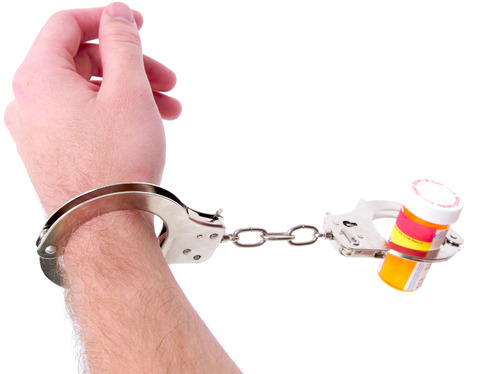At Carolina Recovery, we provide comprehensive addiction treatment services designed to support individuals facing substance abuse on their journey to recovery. Our fully accredited centers offer personalized programs tailored to each person’s unique needs, ensuring a holistic approach to healing. With a dedicated team of professionals, we are committed to guiding you through every step of the recovery process.
Vicodin withdrawal symptoms can be intense, painful, and at times dangerous. Many people who misuse Vicodin or become physically dependent on it may not realize how quickly opioid withdrawal can begin once use stops. Understanding these opioid withdrawal symptoms, why they occur, and how to manage them is critical for anyone struggling with Vicodin addiction or supporting someone who is.
In this blog, we’ll explain the key symptoms of Vicodin withdrawal, why they happen, and how treatment can help, including the professional support available at Carolina Recovery’s substance abuse treatment center.
What Is Vicodin and Why Is It Addictive?
Vicodin is a commonly prescribed opioid painkiller. While it helps manage moderate to severe pain, it also carries a high risk for abuse, dependence, and addiction.
What Is Vicodin?
Vicodin is a prescription drug that contains hydrocodone and acetaminophen. Hydrocodone is an opioid that blocks pain signals in the brain. Acetaminophen helps with fever and adds to the pain relief. Vicodin is usually given in pill form for short-term pain management after surgery or injury.
Why Is Vicodin Addictive?
Hydrocodone affects the brain’s opioid receptors, causing a sense of calm or euphoria. These effects can lead to misuse. Over time, the body builds a tolerance, and the person needs more Vicodin to get the same result. This pattern increases the risk of opioid use disorder and addiction.
The Role of Abuse and Dependence
Abusing Vicodin means using it in larger amounts or without a prescription. Some people get multiple Vicodin prescriptions or combine the drug with alcohol or other substances, contributing to vicodin abuse . Continued misuse can cause physical dependence. When this happens, stopping the drug leads to Vicodin withdrawal symptoms, which can be severe and hard to manage without help.
Understanding Vicodin Withdrawal
Vicodin withdrawal occurs when a person who is physically dependent on the drug stops using it or reduces the dose.
What Causes Vicodin Withdrawal?
Vicodin withdrawal happens because the body becomes used to the presence of hydrocodone. When the drug is suddenly removed, the brain and body react. This reaction is called opioid withdrawal. It is a clear sign of physical dependence and can develop after regular or long-term use of Vicodin, even when taken as prescribed.
How Withdrawal Affects the Body
Vicodin withdrawal symptoms are both physical and mental. Common physical symptoms include muscle aches, sweating, nausea, runny nose, and stomach cramps. Mental symptoms include anxiety, irritability, and depression. These symptoms can vary in strength depending on how long the person used Vicodin, the dose, and whether other substances were involved.
Why Withdrawal Can Be Dangerous
Some people experience severe withdrawal. High blood pressure, rapid heart rate, and strong drug cravings are common. In some cases, the risk of relapse increases during withdrawal. A person who goes back to using Vicodin may take too much and experience a Vicodin overdose. This is why withdrawal should be taken seriously and monitored by professionals.
The Role of Opioid Use Disorder
Vicodin withdrawal is part of a larger condition called opioid use disorder. This disorder includes both physical symptoms and behavioral symptoms. It can affect a person’s ability to stop using Vicodin without help. According to the Diagnostic and Statistical Manual of Mental Disorders, repeated use despite harm is a key sign of this disorder. Treating opioid use disorder often starts with managing withdrawal symptoms in a safe setting.
Common Vicodin Withdrawal Symptoms
People who are physically dependent on Vicodin often experience a range of withdrawal symptoms after reducing or stopping use.
Early Symptoms of Withdrawal
Early symptoms often begin within 6 to 12 hours after the last dose. These include runny nose, sweating, yawning, anxiety, and restlessness. Many people also report muscle aches and mild stomach cramps. These signs show that the body is reacting to the absence of the drug and trying to adjust.
Moderate to Severe Symptoms
As withdrawal continues, symptoms become more intense. Nausea, vomiting, diarrhea, and high blood pressure are common. People may also feel chills, tremors, and extreme fatigue. Some experience mood swings, depression, and increased sensitivity to pain. These symptoms can make it difficult to function without medical support.
Psychological and Behavioral Symptoms
Vicodin withdrawal can also affect mental health. Anxiety, irritability, and sleep problems are frequent. Some people may isolate themselves or experience social withdrawal. In severe cases, thoughts of self-harm or suicide can occur. These behavioral symptoms may be worse in people with co occurring disorders or a history of mental illnesses.
Risk of Relapse During Withdrawal
The urge to relieve withdrawal symptoms can lead to relapse. People often crave more Vicodin to stop the discomfort. This is especially dangerous because tolerance may drop during withdrawal. Taking the same dose as before can cause a Vicodin overdose. This is why medical supervision is recommended when experiencing withdrawal symptoms.
How Treatment Helps Manage Withdrawal Symptoms
Effective treatment is essential for managing Vicodin withdrawal symptoms and supporting long-term recovery.
Medical Supervision During Detox
Undergoing detoxification with medical supervision ensures safety and comfort. Healthcare professionals monitor vital signs, manage symptoms like high blood pressure and muscle spasms, and provide medications to ease discomfort. This approach reduces the risk of complications associated with opioid withdrawal.
Comprehensive Care at Carolina Recovery
Carolina Recovery offers personalized treatment plans for individuals facing Vicodin withdrawal. Their programs address both the physical symptoms and underlying causes of opioid dependence and use disorder. By combining medical care with counseling, they help patients manage pain and reduce the likelihood of relapse.
Addressing Co-Occurring Disorders
Many individuals with Vicodin addiction also experience mental health issues such as depression or anxiety. Carolina Recovery provides integrated treatment for these co-occurring disorders, ensuring that both conditions are treated simultaneously. This comprehensive approach improves overall outcomes and supports lasting recovery.
Ongoing Support and Relapse Prevention
Recovery extends beyond initial treatment. Carolina Recovery emphasizes continued care through support groups and relapse prevention strategies. By fostering a supportive community, they help individuals maintain sobriety and navigate challenges that may arise during recovery.
For those experiencing Vicodin withdrawal symptoms, seeking professional treatment is a critical step toward recovery. Carolina Recovery provides the necessary resources and support to guide individuals through this process.
Start Your Recovery With Trusted Support From Carolina Recovery!
If you or someone close to you is struggling with Vicodin withdrawal symptoms, you don’t have to face it alone. Withdrawal can be overwhelming, but with the right help, recovery is possible. At Carolina Recovery, our experienced team offers medical support, therapy, and long-term care designed to address every part of opioid use disorder.
Contact us at (812) 408-8842 today to explore your options!







